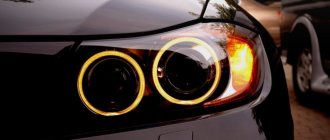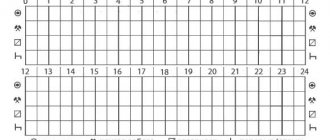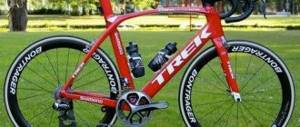Questions about car window tinting are one of the most common. This is logical - drivers who spend a lot of time behind the wheel try to create maximum comfort for themselves, including in the area of protection from external light, prying eyes, etc. At the same time, excessive darkening negatively affects traffic safety and, again, it is logical that the state is trying to prevent this from happening.
On a compromise between these phenomena - safety and the desire to tint the windows - the rules are built, violation of which will lead to a fine, and in some cases, to arrest.
What tinting is acceptable, how a violation is determined and what the fine is for tinting - we will consider these issues in this material.
Is car window tinting allowed in Russia?
There is no complete ban on tinting according to Russian laws. However, shading standards are strictly regulated and have different indicators depending on the type of window. Next, we will consider the rules of tinting that are permitted by law, dividing all car glazing into the following categories:
- Rear window.
- Side rear windows.
- Side front.
- Windshield (windshield).
- Upper colored stripe on the windshield.
The rules will be provided for a standard passenger car, implying that cars with more windows, such as minivans, minibuses, have rear, front and front side windows subject to the same rules, and all others may fall into the "rear side" category.
What kind of tint is the fine for?
Firstly, only the tinting of the front side windows and windshield is fined; the rear windows can be tinted at your discretion.
Secondly, certain tinting of front windows is permitted by law, and it is this relaxation that causes so many violations.
By law, glass must transmit at least 70% of light. Car enthusiasts, having learned this, decide to use light tint, and as a result, they receive a fine, and cannot understand the reason, because everything seems to be according to the law.
There are two points here. First, even with weak tinting, it is possible to assess the degree of light transmission only with the help of special equipment. Perhaps what you think is a slight darkening actually exceeds acceptable standards. The second point is that many car manufacturers immediately produce slightly tinted glass, so even the use of weak tinting will reduce the percentage of light transmission below the required level.
What tinting is allowed according to GOST?
“Habit is second nature,” says popular wisdom, and in the case of tinting this is further confirmed. It is out of habit that the word “GOST” is often used colloquially when speaking about a document regulating these standards. However, for several years now, the rules in this area have been established by a different type of regulation.
At the moment, the document that determines the possibility of tinting car windows is the Technical Regulations of the Customs Union “On the Safety of Wheeled Vehicles”, and more precisely – Appendix No. 8 to it, called “Requirements for vehicles in operation”, section 4 which is called “Visibility Requirement” (hereinafter, Requirements), and contains the parameters we need.
At the same time, there is also a current GOST 32565-2013, confirming the same standards, but only within the framework of front-view glass (70%, regardless of the type of glass - tempered or multi-layer). Moreover, this document establishes standards for conducting inspections, so we will return to it later.
What kind of tint do the Requirements allow? Let's look at the categories selected above:
| Glazing category | Tinting standards |
| Rear window | If there are side mirrors - no restrictions (with the exception of mirror tinting - it is prohibited). |
| Side rear windows | |
| Side front | Light transmittance is at least 70%, and in the case of using vehicle reservations - at least 60%. |
| Windshield (windshield), excluding the part indicated below | |
| Top stripe on the windshield (dark, colored, athermal, etc.) | For passenger vehicles - no more than 14 cm (140 mm); for some types of large-capacity vehicles, the width of the strip is allowed to the upper edge of the working area of the windshield wipers. |
8(800)350-23-68
Dmitry Konstantinovich
Expert of the site "Legal Consultant"
Ask a Question
In simple words, car service centers often give the following advice: tint the rear windows as you wish, and on the front windows use a film with a light transmittance of at least 70%. If you follow these tips in practice, you can end up in an unpleasant situation. Everything is correct with the rear ones - it doesn’t matter what they look like, even if they’re completely black. But there is a nuance with the front ones. The fact is that the indicated 70% is the total transmission capacity of the finished window, and the glass initially does not transmit 100% of the light, and over time this figure does not change for the better. If, for example, the glass itself does not transmit at least 1%, then when added to a 70% film, the light transmittance will be 69%, which may be considered a violation and a fine imposed.
Rules for choosing tinting
You need to tint your car windows correctly:
- the upper part of the windshield can be closed to a width of up to 14 cm, without paying attention to the light transmission of the strip;
- The rear window is not prohibited from being completely darkened, as are the rear side windows;
- the front can be tinted so that the light transmission level is 70%;
- Side viewing windows can be darkened in the same way.
The values of the indicators are specified in paragraph 2.2.4 of GOST 5727-88:
The light transmission of windshields of vehicles and trams must be at least 75%, for other windows - at least 70%.
But now it is partially outdated, and it was supplemented by the Government Decree “On Traffic Rules”, which says:
Transparent colored films can be attached to the top of the windshield of cars and buses. It is allowed to use tinted glass (except for mirror glass), the light transmission of which complies with GOST 5727-88. It is allowed to use curtains on the windows of tourist buses, as well as blinds and curtains on the rear windows... if there are external rear-view mirrors on both sides.
Myths and reality about window tinting
First of all, let's focus on two, at first glance, obvious points:
- The inspection by traffic police officers of tinting for compliance with the Requirements must be carried out according to certain rules.
- Failure to comply with these rules will allow you to challenge the fine.
These two points, in principle, contain the main thing why you need to find out the entire verification process - in order to be able to do without a fine. At the same time, the procedure itself, oddly enough given the presence of regulatory documents, contains many harmful myths. Let's start by debunking them.
At what humidity, temperature and atmospheric pressure can tint measurements be taken?
Indeed, in the previously existing GOST standards such parameters mattered and, for example, it was impossible to measure tint in the rain or at night. However, with the adoption of GOST 5727-88 and, accordingly, the cancellation of the previous ones, neither temperature, nor humidity, nor atmospheric pressure are no longer taken into account when measuring . This fact causes a lot of discussion in the legal community, but, nevertheless, the reference to these values has been removed from the current version of GOST.
Interestingly, GOST 5727-88 establishes standards for conducting various tests related to glass, for example, for strength, curvature, etc., but in other cases the parameters of temperature, humidity and pressure are important, namely in the case of light transmission - not.
The parameters of temperature, pressure and humidity are indicated in the documentation for the measuring device - shouldn't they be taken into account?
According to law enforcement practice, in controversial situations, both traffic police officers and the courts place the provisions of GOST higher than the documentation of devices. As a result, referring to GOST, it is argued that the weather conditions of the inspection have not been established and cannot be taken into account.
This is important because inexperienced lawyers or drivers who do not seek the help of professional motor vehicle lawyers often try to build a defense based on the instructions for light transmittance measuring devices.
Is it true that light transmission testing can only be done at stationary traffic police posts?
No it is not true . No longer true. Previously, there actually existed regulatory documentation establishing the mandatory requirement of inspection only at a stationary post, but in the current editions, these norms are absent.
Let’s end the harmful myths here and move on to actual procedural issues.
How to check window tinting
Checking the light transmittance of automobile glass belongs to the category of assessing the technical condition of the car.
On the official website of the traffic police (gibdd.ru) it is documented that it is carried out exclusively by representatives of the Technical Supervision service or the traffic police.
You do not have the right to refuse a representative of the law an inspection: he does his job and acts within the framework of the powers indicated in the documents:
- Code of Administrative Offenses of the Russian Federation Art. 28.3. “Officials authorized to draw up protocols on administrative offenses (administrative offences)”;
- Code of Administrative Offenses of the Russian Federation Art. 26.8. “Indications of special technical means”;
- Code of Administrative Offenses of the Russian Federation Art. 23.3 “Internal affairs bodies (police).”
Based on the documents, it can be argued that each representative of the traffic police patrol service has the right to check the technical condition of the vehicle. Interestingly, such a check can also be carried out by a traffic police officer with the appropriate rank.
The traffic police is a police department, therefore, based on the above, traffic police inspectors have the right to check the throughput coefficient of tinting, as well as, if the need arises, to assess its technical condition.
A taumeter is a device that is used in our country to measure the ability of category I glass tinting to transmit light rays.
Today representatives of inspection bodies use the following devices:
- "Blik-N";
- "Blik";
- "Tonic";
- "Light".
In terms of technical condition, “Blik” is the most common among devices. According to its technical condition, the following requirements are imposed on it:
- Verification by the bodies issuing the certificate for the right to use is carried out once a year, at least.
- After verification, the device must be sealed, and a certificate confirming this fact will be issued.
- Blik is charged from the cigarette lighter in the car.
The document confirming the completed inspection may be kept in the department. To confirm that the check has been completed, a paper tag is hung on the taumeter with information about the date of sealing and the number of the confirmation certificate.
When taking measurements using “Blik”, small errors in the accuracy of measurements are allowed on a winter or cloudy day. This must be taken into account when taking readings from the device screen. The time of day does not affect the accuracy of the taumeter readings.
We recommend
“Fine for dirty car license plates in 2021: how to avoid it” Read more
When measuring the ability of tinting to transmit light, knowledge of GOST standards will be useful. The display will not show the transmittance of light, but the sum of the rays penetrating through it. The number 80 on the taumeter means that the percentage of tint is 20%, which means that the standards have not been violated.
Rules for measuring tint after stopping
Exceeding the glass tinting standards is an administrative offense in accordance with Part 3.1 of Article 12.5 of the Code of Administrative Offenses of the Russian Federation. The standards, in accordance with this article, are the parameters specified in the requirements of the Technical Regulations.
In accordance with this, the registration of an offense occurs according to the norms established by administrative legislation:
- In accordance with Article 23.3 of the Code of Administrative Offenses, control of the technical serviceability of vehicles is assigned to traffic police officials.
- Article 28.3 of the Code of Administrative Offenses establishes that in this case a protocol on an administrative offense must be drawn up.
- Article 26.8 of the Code of Administrative Offenses obliges the traffic police, when using special technical means, to enter their testimony into the protocol.
Based on these and other standards, we can formulate the basic rules for measuring tint, violation of which may become grounds for challenging the decision of a traffic police officer:
- Measurements must be carried out with a certified instrument.
- The device must have timely verification, for which documentation must be available and demonstrated upon request.
- Measurements are carried out at three points, and the final result is their average value.
- Based on the results of the inspection, if a violation is detected, a protocol is drawn up.
- The device readings must be included in the administrative violation report.
8(800)350-23-68
Dmitry Konstantinovich
Expert of the site "Legal Consultant"
Ask a Question
The question often arises of involving witnesses when drawing up a protocol. For this type of violation, witnesses are not needed . Moreover, even if the perpetrator refuses to sign the protocol, on the basis of Part 5 of Article 28.2 of the Code of Administrative Offenses of the Russian Federation, a corresponding note is made about this, but witnesses are not involved.
Legal regulation
This issue is regulated by several laws and regulations. They indicate not only the driver’s responsibilities regarding car tinting, but also the powers of traffic police officers, which they do not have the right to exceed.
The following acts regulate liability for non-compliance with light transmittance standards:
- Federal Law No. 3 “On the Police”. Represents the rights and obligations of inspectors and law enforcement officers who are on duty (Part 3 of Article 12 and 13). The procedure for restricting the rights and freedoms of violators of the law (Part 2 of Article 6).
- Administrative regulations for the supervision of the technical condition of vehicles.
- Code of Administrative Offenses of the Russian Federation. Contains articles that regulate punishment for a driver who does not comply with glass light transmittance standards. For violators, Article 12.5 is provided. A prescription may also be issued.
Not a single article considers the case when the driver removes the film before measuring light transmittance. No additional punishment is imposed for this, but the driver will not receive any relief in this way.
What is the penalty for tinting?
Responsibility for tinting is directly stated in Part 3.1 of Article 12.5 of the Code of Administrative Offenses of the Russian Federation - for driving a vehicle with windows whose light transmission violates the Requirements, a fine of 500 rubles. In this case, the traffic police inspector has the right to prohibit further operation of the vehicle until the situation is corrected (cessation of illegal actions/conditions).
Do I need to remove the film on site? A request (order) from a traffic police representative to remove the tint may imply something similar. What happens if you don't fulfill it? A repeated fine for tinting is possible, because... a violation under Part 3.1 of Article 12.5 of the Code of Administrative Offenses will be recorded again. However, this is not the worst thing!
A repeated stop with a tint that violates the Requirements, in the presence of a previously formalized need to dismantle the tint, can be interpreted as a violation of Article 19.3 of the Code of Administrative Offenses of the Russian Federation - disobedience to the lawful order of a police officer (and other officials listed in the article), which leads not only to a fine of 500 – 1000 rubles, but also the possibility of administrative arrest for up to 15 days. At the same time, neither deprivation of rights nor “removal of numbers” is provided for under these articles.
8(800)350-23-68
Dmitry Konstantinovich
Expert of the site "Legal Consultant"
Ask a Question
In accordance with Part 1.3 of Article 32.2 of the Code of Administrative Offenses of the Russian Federation, a fine for a violation under Article 12.5 can be paid with a 50% discount if the money transfer is made within the first 20 days from the date of drawing up the protocol.
How long does a tint prescription last?
The traffic police requirement to remove tinting is usually valid for 10 days. It is indicated in the text of the document. At the same time, we do not recommend driving with tinting after the prescription, without eliminating the violation. Even if the validity period of the tinting order has not yet passed, the traffic police officer has the right to fine the driver again for violating the rules for tinting the windows, which will entail administrative liability.
What to do if you receive a requirement for tinting?
If the driver admits the violation, it is better to get rid of the tint as quickly as possible. Possible problems during re-checking have already been indicated above. If you have been issued a fine for driving with tinting, but there is no agreement, it must be contested, but we will talk about this separately.
The recognized fine must be paid. In situations of uncertainty, monitoring the presence of a resolution can be done using the same methods as for any other violation, including finding out through an online check of fines.
We should not forget that in accordance with Article 4.5 of the Code of Administrative Offenses of the Russian Federation, the statute of limitations (period of liability) for this offense is 2 years.
What to do if you don’t agree with the contents of the protocol?
You should not try to prove that you are right by entering into conflict. As a result, a minor fine can turn into a much more serious punishment.
After drawing up the protocol, you must proceed as follows:
- Study the document carefully;
- Write about your disagreement with the violation, explaining the reason (you should note all the mistakes that were made by the inspector during the inspection process);
- Put a signature.
Each of these points is mandatory. You should not listen to the opinion of drivers who believe that a fine for tinting is not valid if there is no signature on the protocol. In its place will be the inscription “refused to sign.” In this case, going to court will most likely not lead to the desired result.
How to avoid a fine for window tinting
Everywhere has its own nuances, and when measuring the density of glass tinting, they are also present. Knowing them will allow the driver to avoid a fine.
First, as mentioned above, the conditions under which the test is carried out should be taken into account. In cold and cloudy weather, most devices for determining the light transmittance of tinting provide information with minor deviations.
But the most standard situations are when traffic police officers draw up violation reports without using a taumeter. It is not difficult to challenge such a fine, since the administrative penalty is imposed only on the basis of the device readings. The absence of such means that the inspector assessed the density of the tint “by eye”.
However, even in such cases there are pitfalls. It could be the following.
A traffic inspector is more familiar than any driver with traffic rules, laws of the Russian Federation and GOST standards. When he draws up a report on violation of glass tinting standards without using a special device, the driver is given a fine based on Art. 12.5.1 instead of the article violated by him. 12.5.3.1. The amount of the fine is equal, but that is not the point.
Art. 12.5. Part 1 of the Code of Administrative Offenses reads as follows: “Driving a vehicle in a faulty condition or in the presence of conditions prohibiting its operation.” The document does not disclose the essence of the offense, but a fine is imposed for driving a car in which the view is limited by foreign objects or coating.
Photographic documents and video footage will serve as evidence in the process of appealing the fine. The main argument is that the tint film has nothing to do with these elements, because its transmission coefficient recorded by a special device is absent.
Removable tinting belongs to the category of items that limit visibility, so Art. 12.5. Part 1.
Inspectors do not have rules and requirements regarding the operation of the taumeter, since GOST 5727-88 “Safe glass for land transport. General Technical Conditions” ceased to be valid, and GOST 23565-2013, which came into force on January 1, 2015, under the same name, does not contain this information.
The instructions for operating the device include detailed information about what the measurement conditions should be, but it is not the responsibility of the traffic police inspector to carry this document with him. It is located at the post, so a driver who wants to get acquainted with it needs to go with a traffic police officer to his workplace (if he was stopped far from the traffic police post).
Please note that for individual devices, conditions regarding the degree of measurement error are not specified in the operating instructions.
You can also avoid a fine by removing the film under the supervision of a traffic inspector; remember that playing with the law does not lead to good things. If you decide to tint the windows and headlights, do it according to GOST.
Light transmittance control
Traffic police are authorized to measure glass throughput both at posts and at any location. The requirement to take measurements complies with the law; the driver will have to provide this opportunity.
Some drivers receive the results of the examination and present the document as evidence, but the evidence has no real weight. Traffic police officers are not required to take the document into account; most often they ignore it.
Various devices are used to check the light transmittance, but the traffic police uses only 3 types:
- AKL-2M is the simplest device with rubber seals. Gives correct results only at temperatures above 10°C and high quality rubber;
- "Tonic". Detectors are attached to both sides of the glass and held until results appear. Minimal errors occur only when the points on both devices clearly coincide. The device is resistant to temperatures from -10°C to 40°C;
- “Light” is the most convenient device; it is based on magnetic detectors. To obtain reliable data, 3 or more measurements are required, with further calculation of the arithmetic average value. Works even at sub-zero temperatures.
In order not to pay a fine for failing state control from the traffic police, you should carefully monitor the conditions for taking measurements. Any violations will lead to significant errors in readings.
“Tonic” device for checking tinting











